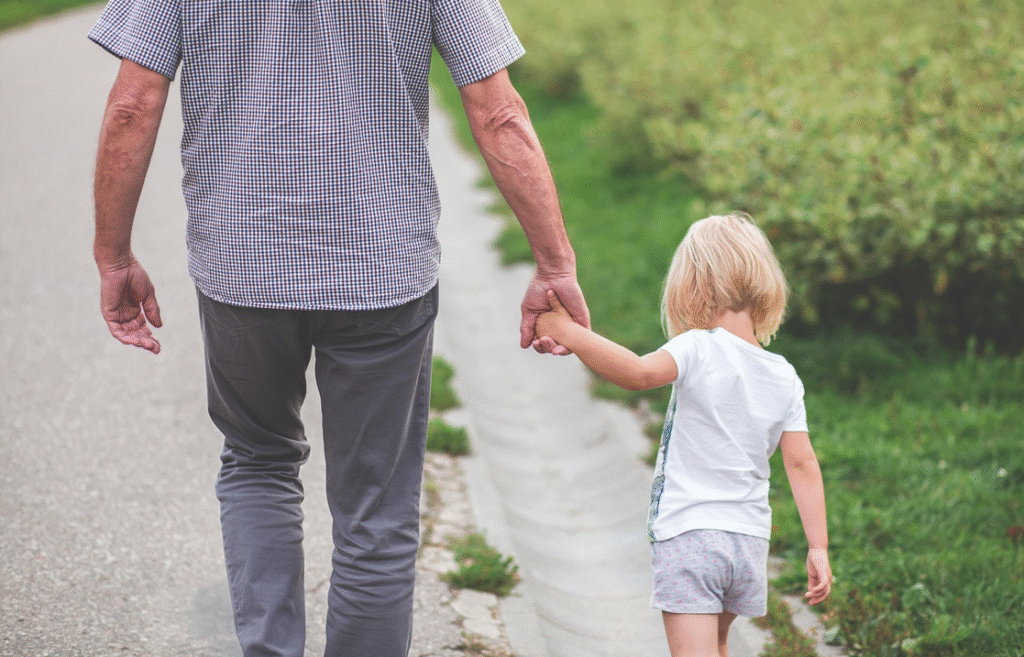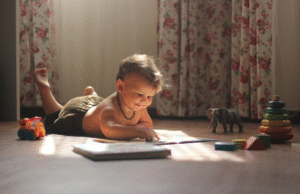Uncertainty has become the backdrop of modern life. Whether it’s a global pandemic, political tension, climate crisis, or economic stress, children are no longer shielded from the pressures and fears that once seemed reserved for adults. They see it in headlines, overhear adult conversations, or feel it in disrupted routines. In such moments, a parent’s role becomes not only to provide safety but to nurture something deeper and more powerful: hope.
Hope is not simply wishing for things to get better. It’s a psychological resilience tool a belief rooted in the understanding that even when life is unpredictable, there is meaning, possibility, and purpose. Keeping children hopeful during uncertain times is both a necessity and an opportunity to raise a generation that can adapt, lead, and thrive.
Why Hope is Critical for Children
Hope fuels perseverance. According to the American Academy of Pediatrics, children who develop hopeful outlooks are more likely to experience emotional stability, academic achievement, and positive social behavior. They are also less likely to suffer from depression, anxiety, or helplessness when faced with adversity.
In contrast, a child without hope may become:
- Emotionally withdrawn
- Fearful of the future
- Dependent on avoidance rather than engagement
- Prone to giving up easily
By fostering hope, we’re giving our children more than just comfort — we’re equipping them with a lifelong compass.
What Shakes a Child’s Hope in Uncertain Times?
Uncertainty doesn’t always need a dramatic crisis. It could be as complex as geopolitical conflict or as personal as a parent’s job loss. Regardless of the scale, children absorb uncertainty through:
1. Changes in Routine
Stability is deeply important to children. Sudden changes — remote schooling, canceled birthdays, moving homes — can feel like the world is shifting beneath their feet.
2. Parental Anxiety
Children are emotional mirrors. They pick up on unspoken tension, financial stress, or arguments between caregivers.
3. Negative News Cycles
Even without full understanding, children can sense despair in the news. Constant exposure to stories about war, disasters, illness, and social conflict builds silent emotional fatigue.
4. Loss or Separation
Whether it’s the loss of a family member, a pet, or even a friendship, grief affects a child’s sense of safety and their understanding of permanence.

How to Help Children Stay Hopeful: 12 Meaningful Strategies
1. Normalize Uncertainty Without Amplifying Fear
Start by acknowledging that life can be unpredictable. Instead of pretending everything is fine, teach children that not knowing everything is okay and that it’s still possible to move forward with courage.
Example: “Yes, things are different right now, but different doesn’t mean worse. We’ll get through this together.”
2. Make Your Presence a Source of Stability
Your child doesn’t need you to have all the answers. They need to know you’re emotionally and physically there. Routines, hugs, eye contact, bedtime rituals — these small anchors remind children that love and safety still exist even when the outside world feels confusing.
3. Teach Perspective Without Dismissing Their Emotions
If your child expresses fear or sadness, don’t minimize it. Instead, guide them to a broader understanding.
Say: “I know you’re scared. That’s okay. But remember, hard times have come before, and people always found ways to heal, grow, and help each other.”
4. Focus on What They Can Control
Empower children by giving them responsibility in daily life. Let them:
- Pack their own lunch
- Organize their school schedule
- Write a gratitude journal
- Choose a daily activity
Feeling in control builds confidence, which fuels hope.
5. Limit and Filter Media Exposure
Don’t assume kids are ignoring the news they often internalize it deeply. Filter what they see, and discuss major events in an age-appropriate way.
When possible, share positive stories about helpers, community solutions, and environmental recoveries.
6. Prioritize Creative Play and Imagination
Hope thrives in imagination. Whether it’s building forts, painting, storytelling, or role-playing, creative play helps kids process emotion and envision better possibilities.
Play is not distraction it’s restorative and emotionally essential.
7. Help Them See Progress and Possibility
Celebrate even small wins: a plant they watered that grew, a difficult assignment they finished, a week they woke up early. Show them that effort leads to growth, even in uncertain times.
8. Tell Stories of Real Resilience
Introduce your child to stories from history or real life about people who faced hardship and rose stronger. This could be:
- A civil rights leader
- An inventor who failed before succeeding
- A community that rebuilt after a storm
Let hope become a learned pattern.
9. Encourage Contribution Over Complaints
Give your child opportunities to help — donating clothes, writing cards for elderly neighbors, or cleaning up a local park. Contribution creates purpose, and purpose is a powerful antidote to despair.
10. Keep a Family Gratitude Practice
At dinner or bedtime, ask:
“What made you smile today?”
“What are three things you’re grateful for?”
This trains the brain to notice good, even when times are hard.
11. Model Resilient Language
Instead of:
- “This is a disaster.”
Say: “This is a challenge we can handle.”
Instead of:
- “Everything is falling apart.”
Say: “We’re figuring it out, one day at a time.”
Children internalize the language of possibility.
12. Protect Their Childhood
Sometimes, hope lives in simplicity. A nature walk. A family movie night. A warm breakfast. Resist the urge to “prepare them for everything.” Let them still be children — curious, playful, imaginative, and imperfect.
Final Thoughts: Building Hope Is a Legacy
The world will never be fully predictable. But that doesn’t mean it has to be frightening. As parents, caregivers, and educators, our role is not to erase uncertainty — it’s to help children meet it with courage, clarity, and care.
Hope is not just protection against fear. It’s the blueprint for building character, the seed of resilience, and the bridge between present discomfort and future possibility.
If we plant hope in the hearts of children today, they will grow into adults who can lead with wisdom, empathy, and grace — no matter what the world throws their way.
FAQs
1. Why is hope important for children during uncertain times?
Hope gives children emotional strength, motivation, and the belief that difficulties are temporary. It helps them build resilience and prevents feelings of helplessness. When children feel hopeful, they are more likely to stay engaged, perform better academically, and maintain healthy emotional development—even during unpredictable challenges.
2. What are signs that a child may be feeling hopeless or anxious?
Some common signs include:
- Withdrawal from family or friends
- Changes in sleep or eating patterns
- Sudden mood swings or irritability
- Loss of interest in activities they once enjoyed
- Expressing fears about the future or feeling “nothing matters”
If these signs persist, it may be time to have a calm conversation or seek support from a counselor.
3. How can parents talk to their kids about difficult world events without scaring them?
Be honest, but age-appropriate. Use calm language and focus on what your child can control. Reassure them that they are safe and loved. Avoid exposing them to excessive news. Let their questions guide the conversation, and don’t overwhelm them with too much information at once.
For tips on age-appropriate explanations, visit HealthyChildren.org.
4. What role does routine play in helping children feel hopeful?
Routine creates a sense of normalcy and control in a child’s day. Predictable mealtimes, bedtime rituals, schoolwork structure, and screen time limits help reduce anxiety. When life feels chaotic, routines offer emotional stability—especially during times of crisis.
5. Can limiting screen time and news exposure help reduce stress in kids?
Yes. Overexposure to negative news and social media can fuel anxiety in children. Set screen time boundaries and discuss the media they consume. Instead of avoiding the topic, co-watch or co-read news together and offer positive, realistic context when needed.



